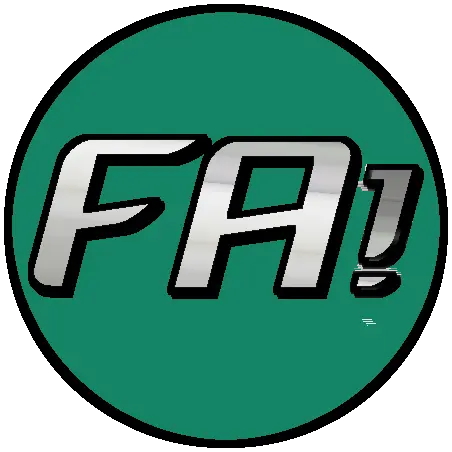Hey! Our game tries to integrate into its vision of the future an assumption of the restoration of Indigenous culture and agency on Turtle Island. As we’re getting ready to release, we’d really appreciate getting more eyes on it and letting us know how it reads and if there are any changes we can make to improve its quality.
The main section which I’d like thoughts on is below. This is taken from the section of the World Guide describing major historical events and turning points. Constructive feedback would be appreciated. Feel free to copy, share, repost, ect. to any other forum where it may get attention, and direct folks to contact us through any social media or email channels on our website (https://fullyautomatedrpg.com). And thanks!
2042 - The Yurok People v. The Bureau of Land Management
In 2028, congress passed the Federal Ordnance for Restoration of Environments for Sustainable Territories (or FOREST) Act. The FOREST Act was a massive compromise legislation which created new programs to encourage forestry management. It included terms to make preserving and expanding forests as carbon sinks financially competitive with logging and mineral extraction by allowing companies to sell carbon offsets; funded construction of new parks; relaxed limits on hunting; and provided dozens of other favors for the various stakeholders needed to secure passage. One of its 35 sections even contained a largely symbolic gesture to American Indian tribes which would return neglected land to them under conditions which were believed unlikely to ever be exercised.
The effects were mixed. By 2038, millions of additional acres of land had been set aside as protected reserves. Many policy experts believed that the reduction in drilling and fracking that occurred was driven more by local bans and a rapid decline in financing as the banking sector began to recognize that new carbon infrastructure had become such frequent targets of sabotage that their risk wasn’t worth the declining returns. Eventually, the carbon offsets market crashed in 2041 following the Second Paradise Fire. A lawsuit followed.
During Our Children’s Trust v. Green Growth Climate Solutions, the climate advocacy group Our Children’s Trust showed that Green Growth Climate Solutions had purchased hundreds of square miles and contracted with the Federal Bureau of Land Management to be responsible for forestry management of thousands more of federally held land in order to sell worthless carbon offsets. At the same time, they’d neglected to perform any meaningful sustainable forestry services as contracted. During the trial, experts testified to the well-known fact that carbon offsets were a junk science that did not meaningfully address the climate crisis, and that the fire danger created by hundreds of thousands of acres of neglected land was well known.
The judgment put Green Growth Climate Solutions out of business and crashed the market for carbon offsets. It also created a scandal for the Bureau of Land Management, which was wholly under-resourced and unequipped to fulfill their legal responsibilities to manage the vast tracts of land that now returned to their oversight. A solution came in the form of The Yurok People v. the Bureau of Land Management in 2042.
As soon as the Green Growth case wrapped, the Yurok People brought a suit to enforce section 33 of the FOREST Act of 2028. In the trial against Green Growth it had been shown that the land belonging to the Bureau of Land Management that they’d contracted to Green Growth and the land privately held by Green Growth (which reverted to BLM following Green Growth’s desolation) had been left fallow for nearly a decade. In a crowning achievement for the First Peoples’ legal movement, a judge concurred that these circumstances fulfilled the conditions outlined in section 33, and granted them 8,000 square miles of territory.
Green Growth’s practices had been common throughout the industry, and as the market crashed and more suits were brought in other states, native groups reclaimed millions of acres more. Though the judgements were stinging, the federal government saw a silver lining. Responsibility for the ever-growing problem of wildfires now rested with the native groups who’d won their cases.
Over the 2040s, the various nations of the first peoples managed to surprise the doubters. They formed the Circle of Nations to assist in inter-tribal management of their expansive returned territories.
They turned land assumed to be of low value into productive food forests, nature reserves, scientific centers, parks, and traditional hunting preserves. While reducing uncontrolled fires, they turned the land into a source of wealth and influence. They granted permissions to communes which met their strict qualifying requirements to live upon the land and learn their techniques. They fed and housed themselves and then thousands upon thousands more.
By the 2060s, the Circle of Nations and the first peoples had become a highly influential force within American science and policy. As society at large underwent a radical rethinking during the years following the Treaty of Antarctica, many of the values and practices of the first people finally saw overdue adoption within the wider culture of the second people.
And like I said on Mastodon, we’ve also been looking for a wider range of voices in the contributors/devs for awhile now, and we’re happy to make edits based on suggestions and discussions if you don’t want that much of a commitment. I joined to have somewhere to talk solarpunk world building and ended up pointing out some issues I noticed with stuff I knew about, and found they were really receptive to my proposed changes. Overall it’s been a great way to get some of my ideas for how solarpunk should look included in a nearly-finished project. So if you have a specific vision for First Nations and Landback, or another domain you’re knowledgeable about, and you’d like to see it included in a TTRPG, we might be a pretty easy way to get it out there.
This is a free, open source project run by volunteers, but I know not everyone’s able to work for free, so I thought I’d at least offer to trade services for services if you’d prefer: if you want a second set of eyes on your writing, targeted feedback, proofreading, etc, let me know! I can also help with art stuff, depending on what you need.
Here’s two changes I’m thinking need added:
The story of Indigenous success is rooted in two victories: first, compelling congress to include a process for claiming land, even if it was essentially designed to fail. Then second, managing to actually use that process despite the odds placed against doing so.
I think this needs to be foregrounded more: that this overall success is the result of clever, persistent, dogged efforts to get any toe hold possible, and to take every opportunity that pops up organically.
Also, this is a story of the government writing a law to improve forestry that invested 99 parts to capitalists and 1 part to native groups. And though the abundance of favors to investors didn’t save the world, they accidentally funded ten years of purchasing land to build a huge bank of land that would transfer to the first people when the market solution failed. I think there’s a lot of poetry about who gets help they didn’t work for and who works for help they didn’t even get.


